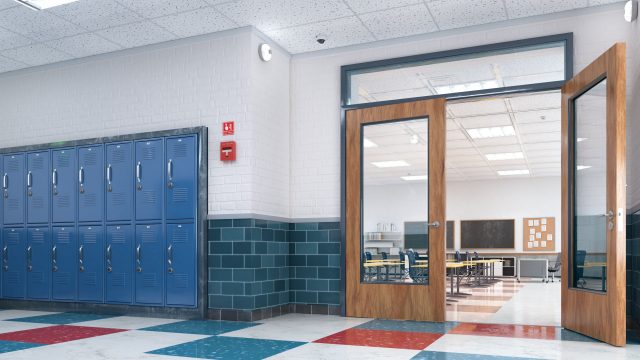As many educational institutions have begun some version of a hybrid approach to the school year, they are faced with new policies, restrictions and uncertainty with what the school landscape will look like in the future. With technology needed to assist in maintaining occupancy limits, social distancing, as well as enhanced access control features – decision-makers have their work cut out for them. ONVIF asked a few of its members what technology is available to assist educational facilities in the 2020/2021 school year.

Sanjay Challa, Chief Product Officer, Salient Systems
Educational institutions are facing an unprecedented challenge in ensuring the health and safety of staff and students. Advanced new cameras and sensors are one of the most effective tools that educational institutions have at their disposal.
With ONVIF, deploying and integrating these new cameras and sensors into existing surveillance systems can be quickly and economically accomplished. World class VMS solutions, such as Salient, ease the burden on hard pressed educational institutions by providing ONVIF support that allows flexibility in camera and sensor technology selections and by providing low cost subscription consumption models to mitigate the financial pressure.

Brad Kamcheff, Marketing Manager, Aiphone
In the past few months, we’ve had to adapt our way of life in many ways, not in the least being in our educational facilities. For many K-12 and higher education institutions, the simple intercom has been a security staple for years, but now in a pandemic-centric world, these devices provide a new set of much needed capabilities. IP-based video intercoms can assist educational facilities in situations, such as increased health screening at campus perimeters, touchless access control using a two-way intercom and video communication, as well as occupancy management in dorms and common areas. Going forward, it will no longer be enough to only manage access to main entry points and exits of any educational facility. Campuses will now have to manage occupancy levels in classrooms, living facilities, common areas, and recreational facilities.

Nigel Waterton, Chief Revenue Officer, Arcules
Depending on where in the country you’re located, there’s a definitive shift in whether education campuses — both K-12 and higher education — are allowing students and staff on-site. Many of these facilities are severely limiting outside contact, which means remote access to technology systems is gaining in popularity. Cloud-based solutions that allow security leaders and decision-makers the ability to remotely manage and monitor physical security reduces the need for on-site personnel to update on-premise hardware. The reduction in technicians having to access a site provides added protection for technicians having to service or troubleshoot in a facility. Cloud-based video intelligence also plays a role in being able to gather relevant video data and monitor facilities for occupancy levels, which can add a layer of protection for educational facilities to adhere to social distancing and capacity limits requirements.

Steve Humphreys, Chief Executive Officer, Identiv
With educational facilities still in pandemic recovery mode, strategic security solutions that go beyond keeping students and staff healthy are needed. Cybercriminals and “Zoombombers” threaten virtual/hybrid classrooms daily; security keys are an effective method of two-step verification in remote learning environments. Additionally, touchless access, i.e. Bluetooth and mobile credentialing (where your phone is the credential), and long-range RFID-enabled credentials (read through pockets/backpacks) should be the new normal for student access cards. Additional security solutions include video surveillance technology and advanced intelligence capabilities that allow for people counting, occupancy controls, temperature screening, contact tracing, and reducing touch points.






